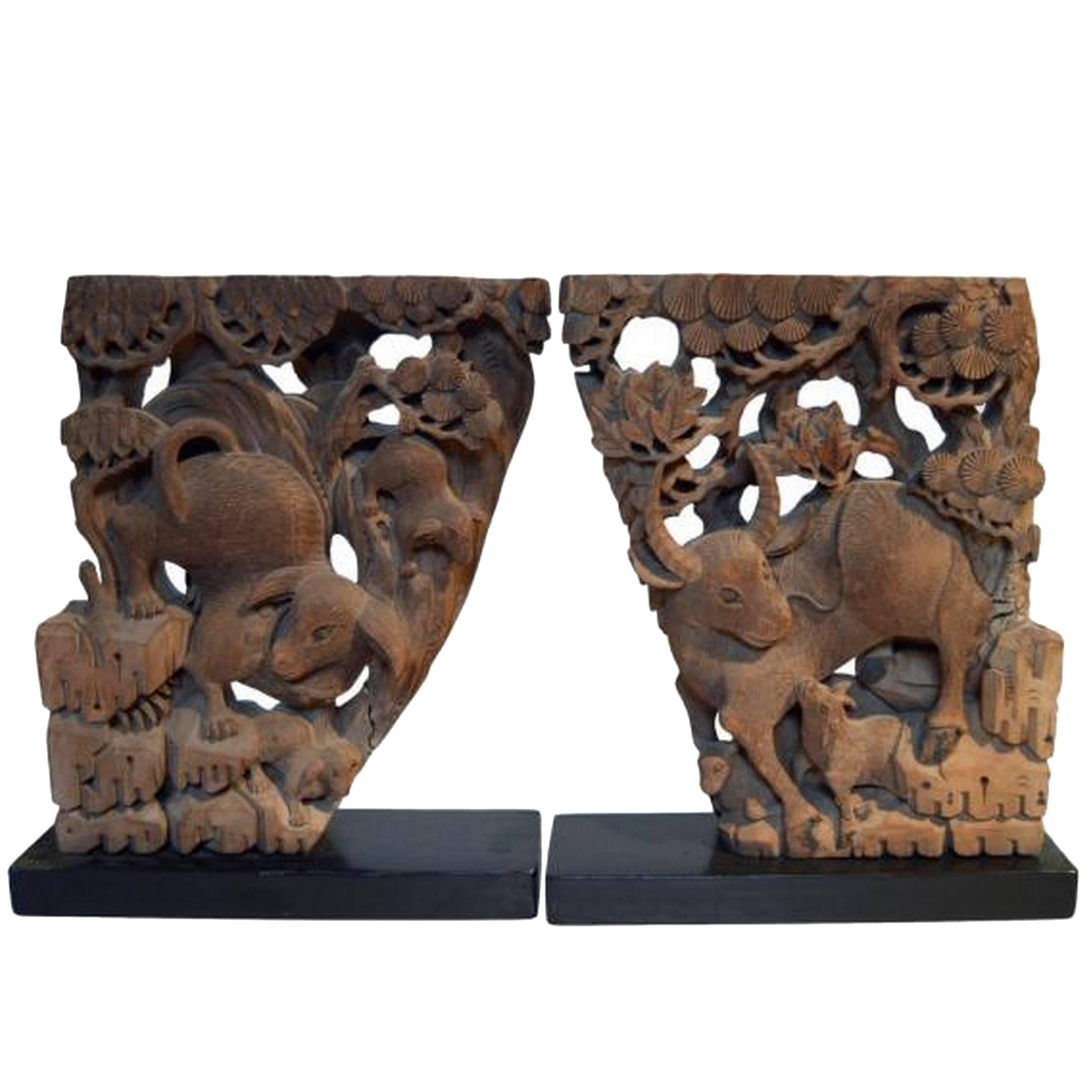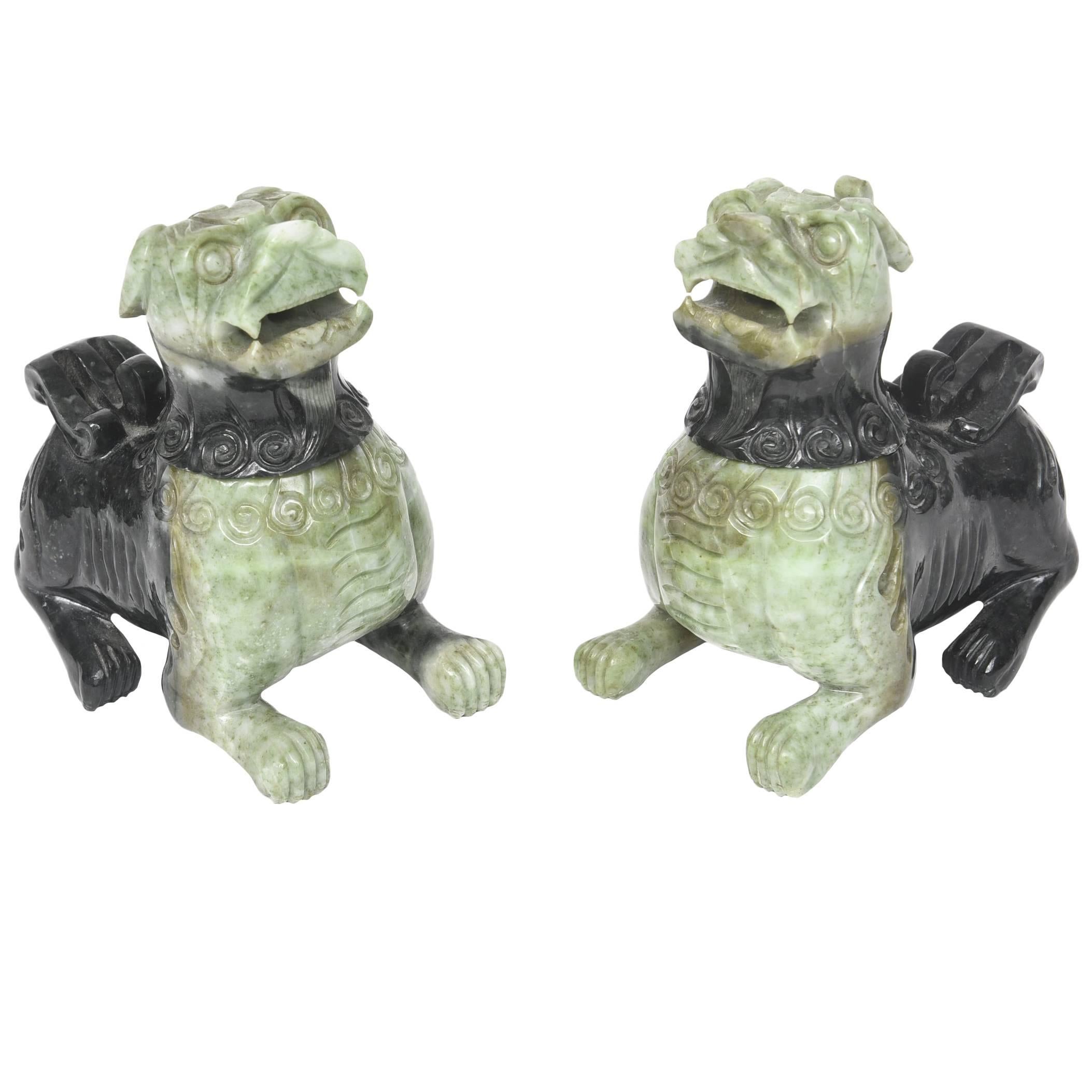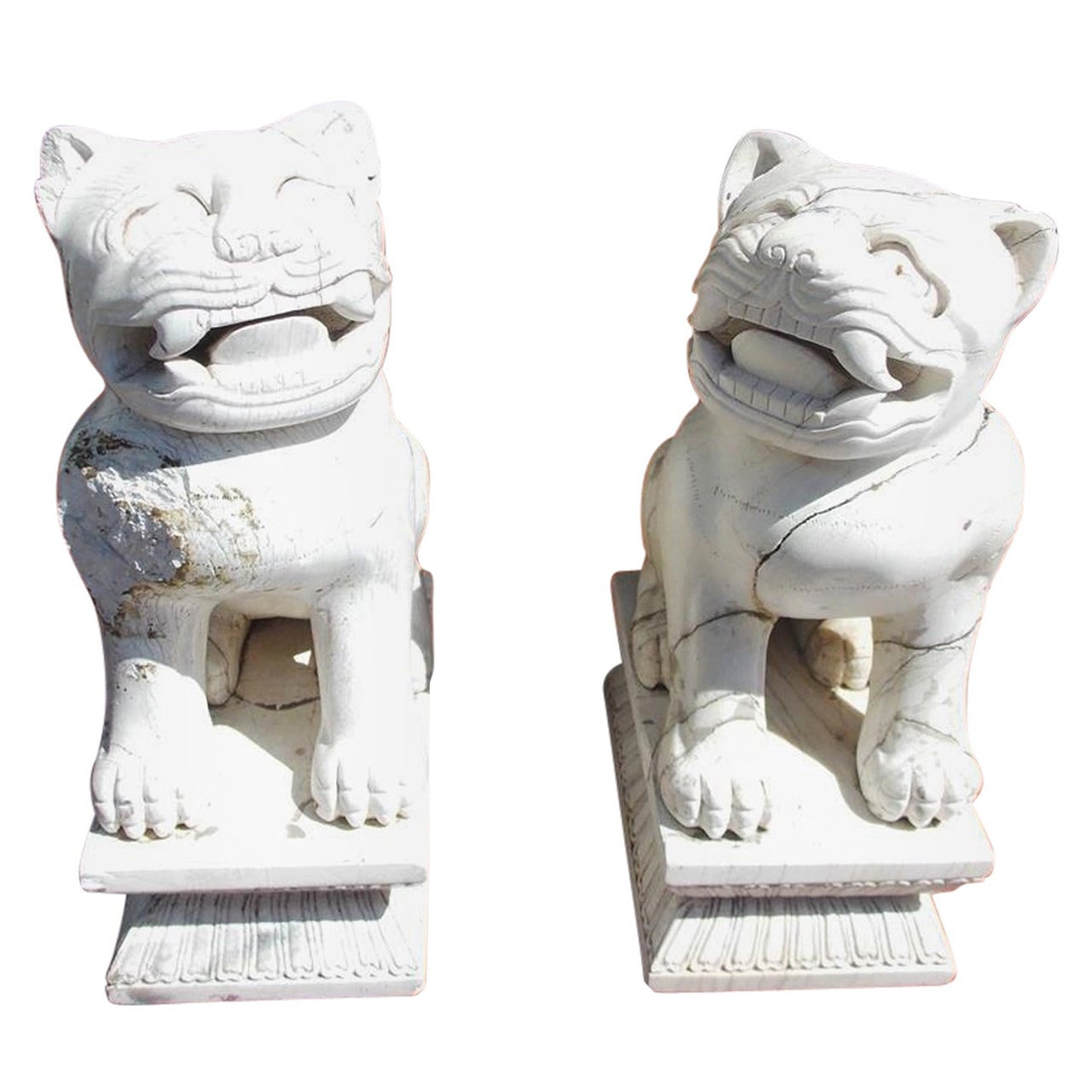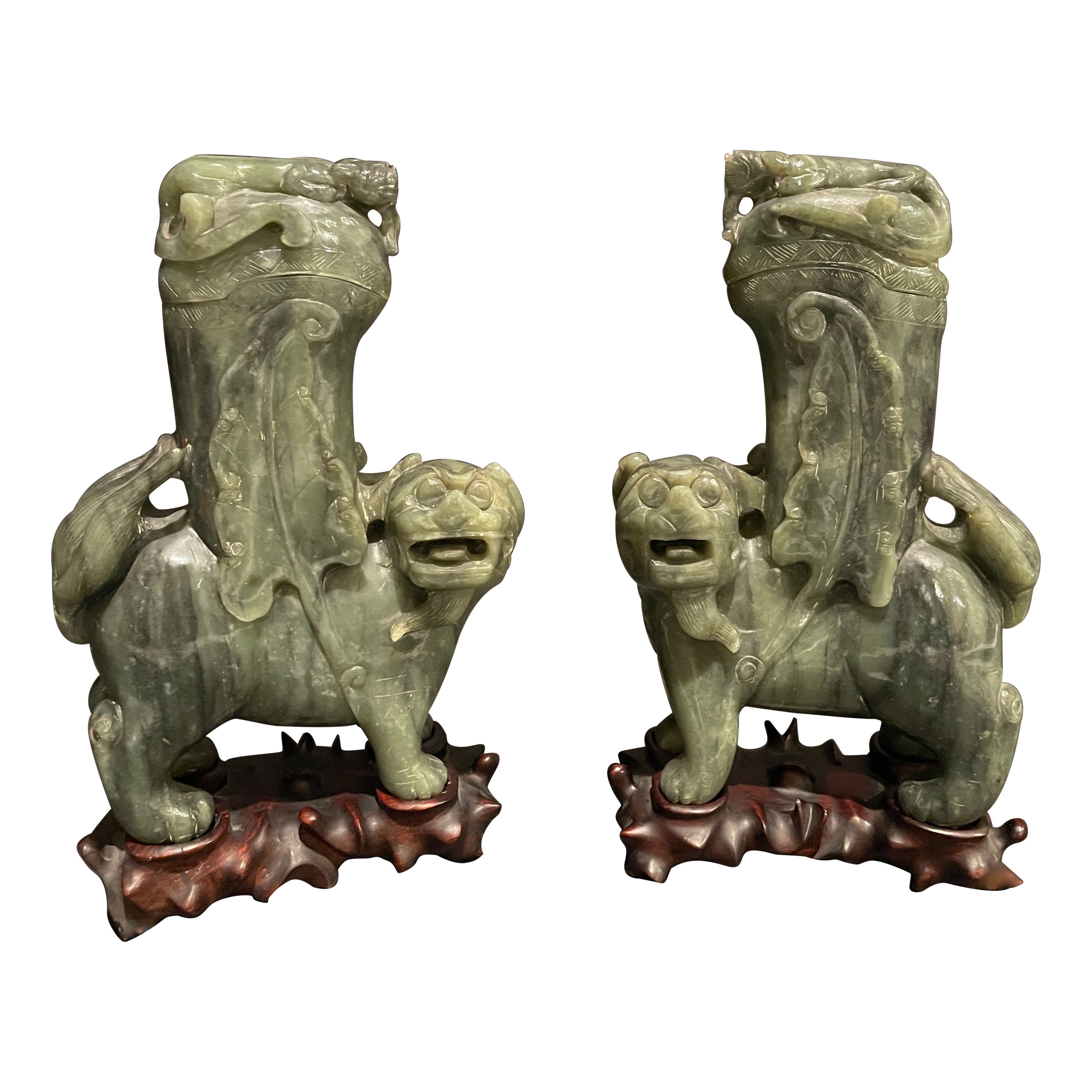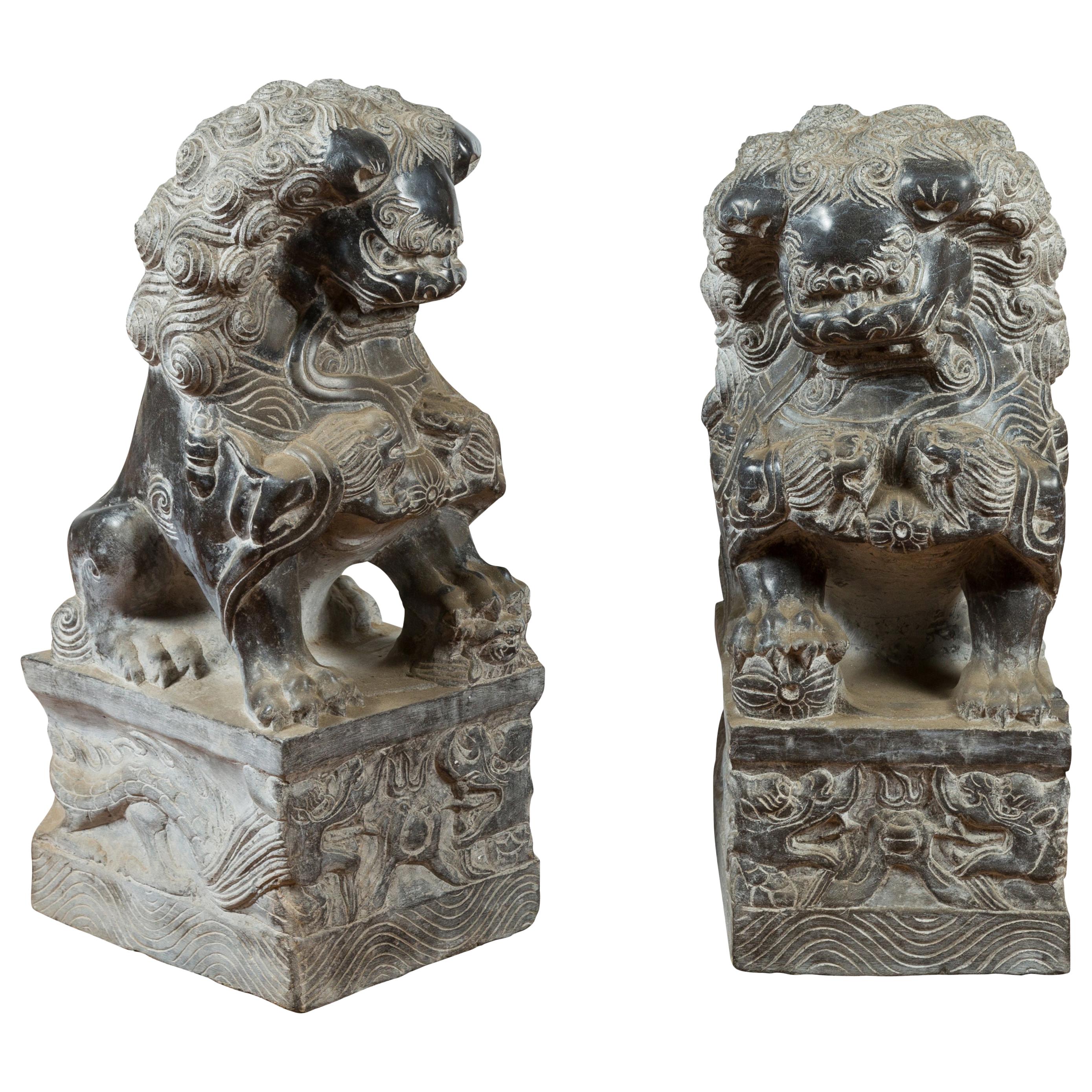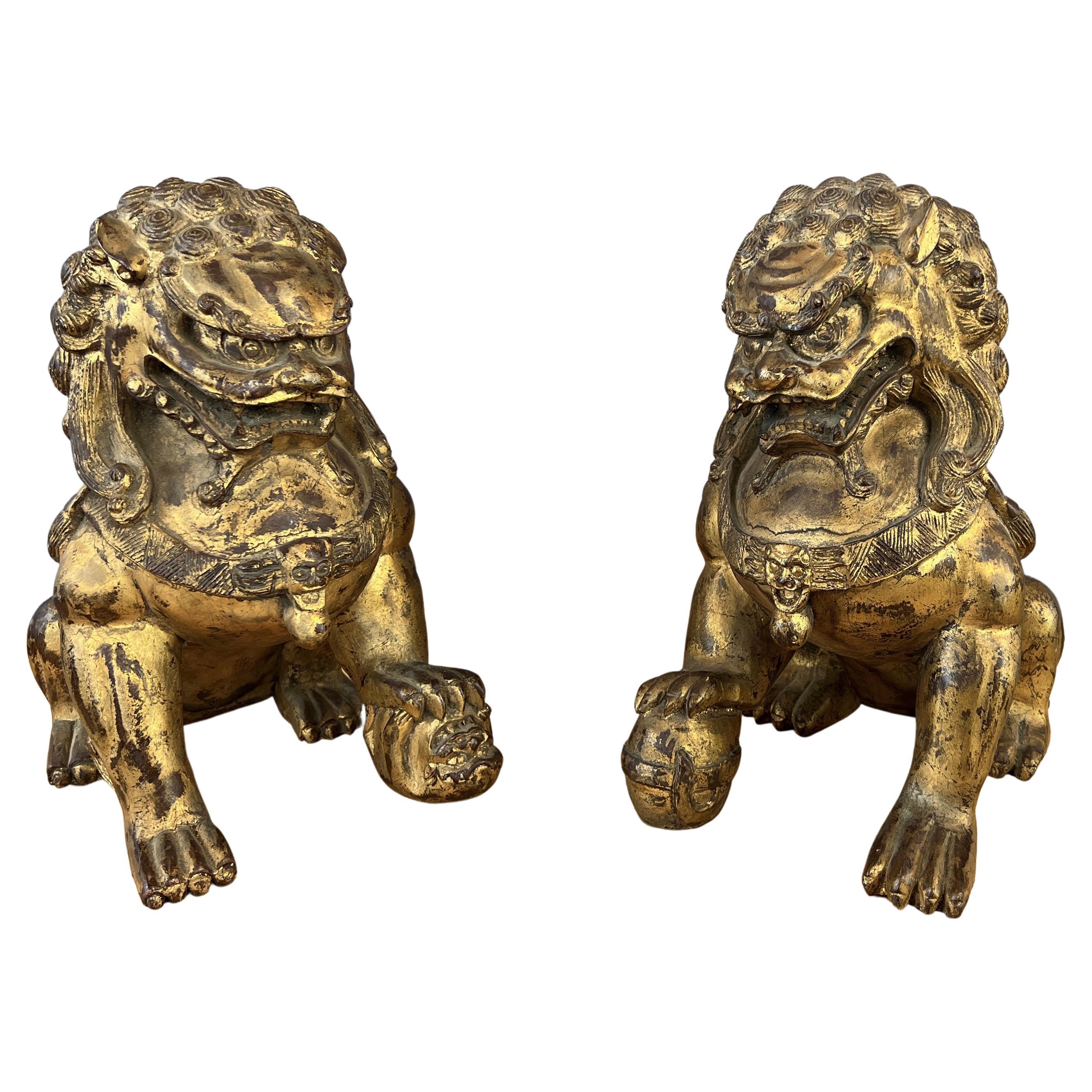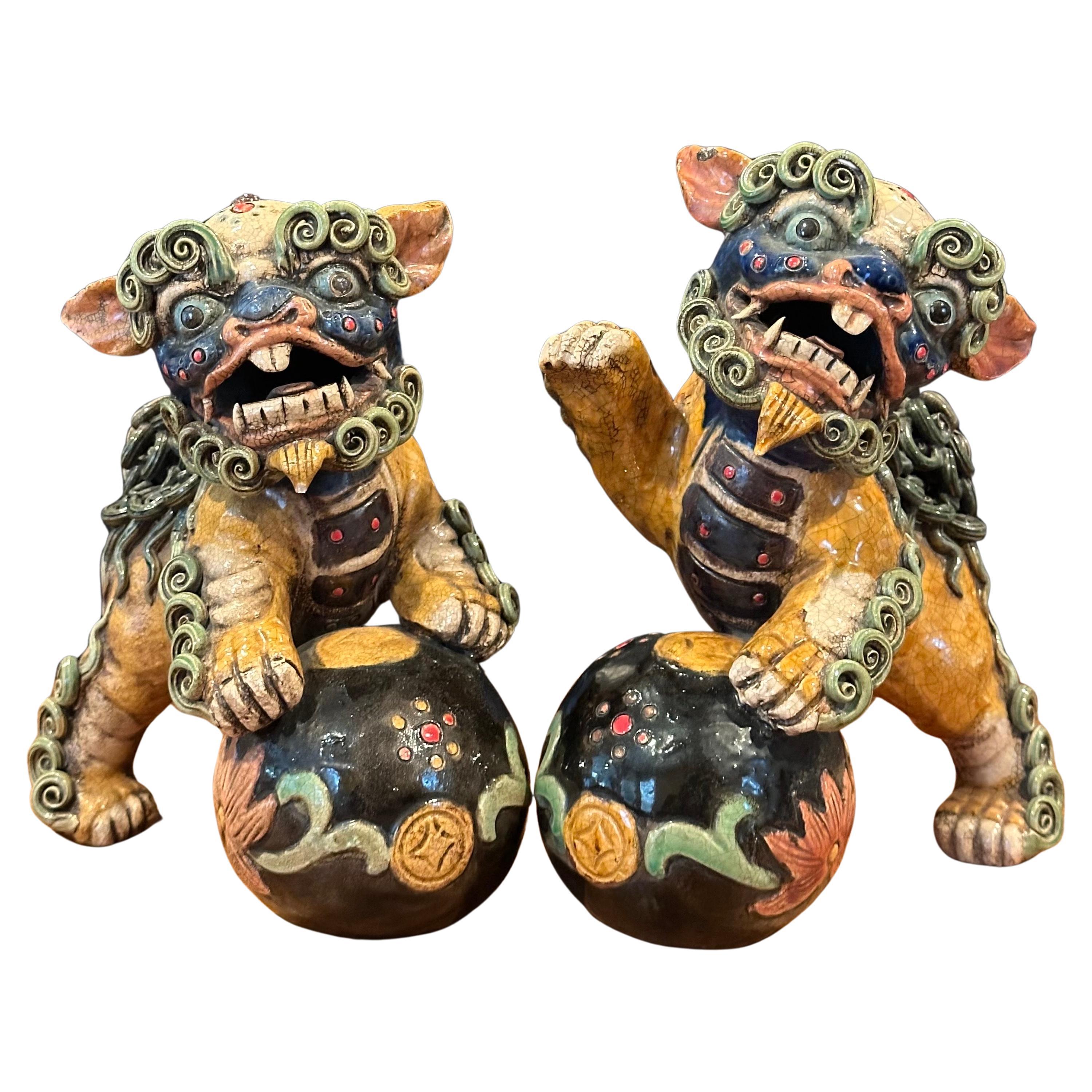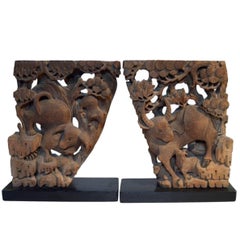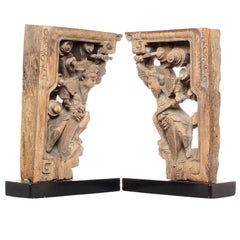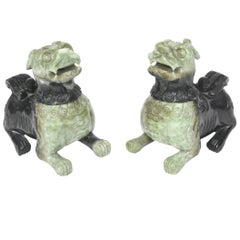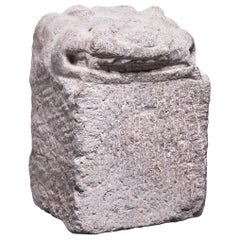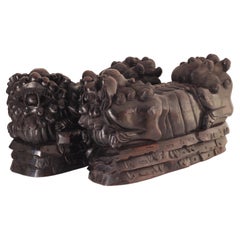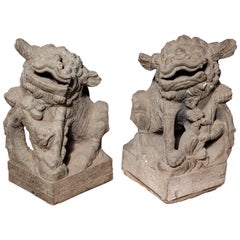
Chinese Pair of Stone Guardian Foo Dogs/Guardian Lions from 18th Century
View Similar Items
Want more images or videos?
Request additional images or videos from the seller
1 of 10
Chinese Pair of Stone Guardian Foo Dogs/Guardian Lions from 18th Century
About the Item
- Dimensions:Height: 20 in (50.8 cm)Width: 9 in (22.86 cm)Depth: 10 in (25.4 cm)
- Sold As:Set of 2
- Materials and Techniques:
- Place of Origin:
- Period:
- Date of Manufacture:circa 18th Century
- Condition:Wear consistent with age and use.
- Seller Location:Yonkers, NY
- Reference Number:Seller: YN2307 / FEA Web1stDibs: 1305228639302
About the Seller
5.0
Platinum Seller
These expertly vetted sellers are 1stDibs' most experienced sellers and are rated highest by our customers.
Established in 1968
1stDibs seller since 2009
912 sales on 1stDibs
More From This SellerView All
- Pair of Antique Hand-Carved Wood Temple Corbels from 18th Century, ChinaLocated in Yonkers, NYA pair of Chinese 18th century hand-carved wooden temple corbels. Each corbel features detailed animals, shells, and other adornments among openwork fol...Category
Antique 18th Century Chinese Antiquities
MaterialsWood
- Pair of Chinese Black Marble Contemporary Facing Foo Dogs Guardian LionsLocated in Yonkers, NYA pair of contemporary Chinese black marble left and right facing foo dogs guardian lions on rectangular bases. Created in China during the 21st century, this pair of black marble gu...Category
21st Century and Contemporary Chinese Sculptures and Carvings
MaterialsMarble
- Pair of 19th Century Chinese Hand-Carved Temple Corbels with CharactersLocated in Yonkers, NYA pair of 19th century Chinese hand-carved temple corbels featuring stylized characters. Each corbel showcases a great wood openwork carving featuring a...Category
Antique 19th Century Chinese Antiquities
MaterialsWood
- Pair of Chinese Vintage Foo Dogs Guardian Lions on Bases with Sandstone PatinaLocated in Yonkers, NYA pair of vintage Chinese stone Foo Dogs guardian lions from the mid-20th century, with sandstone patina, on rectangular bases. Created in China...Category
Mid-20th Century Chinese Sculptures and Carvings
MaterialsStone
- Indian 18th Century Teak Guardian Lion Carving with Traces of Original PaintLocated in Yonkers, NYAn Indian carved teak wood guardian lion sculpture from the mid-18th century, with traces of original paint. Handcrafted in India during the 1740s-1760s in order to take place in a monument, this teak architectural carving features a guardian lion, his teeth resting on a man's head. The sculpture shows traces of its original paint, while carving technique presents a great attention to details. The flat top suggests this was used as a column base, perhaps in a temple. With its expressive character and original paint, this Indian mid 18th century carved lion figure...Category
Antique Mid-18th Century Indian Sculptures and Carvings
MaterialsWood
- Chinese Ming Dynasty Period Male Foo Dog Guardian Lion Hand-Carved SculptureLocated in Yonkers, NYA Chinese Ming Dynasty period (1368 - 1644) hand-carved stone Foo Dog guardian lion sculpture depicting a male placing his paw atop a ball. Created in Ch...Category
Antique 17th Century Chinese Ming Sculptures and Carvings
MaterialsStone
You May Also Like
- Mid-20th Century Pair of Chinese Carved Green Hardstone Foo Dogs / LionsLocated in Miami Beach, FLBi-color green hardstone carved to represent a pair of traditional Chinese foo dogs and lions. The heads of these impressive creatures come off so they can be used as incense burners.Category
Mid-20th Century Chinese Animal Sculptures
MaterialsOther
$1,200 Sale Price52% Off - 18th Century Chinese Guardian SculptureLocated in Chicago, ILThis ancient stone guardian lion shizi was carved by hand out of a single block of limestone. The artisan beckoned the guardian out from the stone, manipulating the unyielding materi...Category
Antique Early 18th Century Chinese Qing Sculptures and Carvings
MaterialsLimestone
- A pair of 19th Century carved Foo temple dogs or Chinese guardian LionsLocated in London, GBChinese guardian lions, or imperial guardian lions, are a traditional Chinese architectural ornament. Typically made of stone, they are also known as stone lions or shishi (石獅; shíshī). They are known in colloquial English as lion dogs or foo dogs / fu dogs. The concept, which originated and became popular in Chinese Buddhism, features a pair of highly stylized lions—often one male with a ball and one female with a cub—which were thought to protect the building from harmful spiritual influences and harmful people that might be a threat. Used in imperial Chinese palaces and tombs, the lions subsequently spread to other parts of Asia including Japan (see komainu), Korea, Philippines, Tibet, Thailand, Myanmar, Vietnam, Sri Lanka, Nepal, Cambodia, Laos, and Malaysia. There has been extensive interaction between Chinese mythology and Confucianism, Taoism, and Buddhism. Elements of pre-Han dynasty mythology such as those in Classic of Mountains and Seas were adapted into these belief systems as they developed (in the case of Taoism), or were assimilated into Chinese culture (in the case of Buddhism). Elements from the teachings and beliefs of these systems became incorporated into Chinese mythology. For example, the Taoist belief of a spiritual Paradise became incorporated into mythology as the place where immortals and deities used to dwell. Sometimes mythological and religious ideas have become widespread across China's many regions and diverse ethnic societies. In other cases, beliefs are more limited to certain social groups, for example, the veneration of white stones by the Qiang. One mythological theme that has a long history and many variations involves a shamanic world view, for example in the cases of Mongolian shamanism among the Mongols, Hmong shamanism among the Miao people, and the shamanic beliefs of the Qing dynasty from 1643 to 1912, derived from the Manchus. Politically, mythology was often used to legitimize the dynasties of China, with the founding house of a dynasty claiming a divine descent. Mythology and philosophy. Further information: Chinese philosophy True mythology is distinguished from philosophical treatises and theories. Elaborations on the Wu Xing are not really part of mythology, although belief in five elements could appear. The Hundred Schools of Thought is a phrase suggesting the diversity of philosophical thought that developed during the Warring States of China. Then, and subsequently, philosophical movements had a complicated relationship with mythology. However, as far as they influence or are influenced by mythology, divides the philosophical camps into two rough halves, a Liberal group and a Conservative group. The liberal group being associated with the idea of individuality and change, for example as seen in the mythology of divination in China, such as the mythology of the dragon horse that delivered the eight bagua diagrams to Fu Xi, and methods of individual empowerment as seen in the Yi Jing (Book of Changes). The Liberal tendency is towards individual freedom, Daoism, and Nature. The relationship of the Conservative philosophies to mythology is seen in the legendary Nine Tripod Cauldrons, mythology about the emperors and central bureaucratic governance, Confucianism, written histories, ceremonial observances, subordination of the individual to the social groups of family and state, and a fixation on stability and enduring institutions. The distinction between the Liberal and Conservative is very general, but important in Chinese thought. Contradictions can be found in the details, however these are often traditional, such as the embrace by Confucius of the philosophical aspects of the Yi Jing, and the back-and-forth about the Mandate of Heaven wherein one dynasty ends and another begins based according to accounts (some of heavily mythological) where the Way of Heaven results in change, but then a new ethical stable dynasty becomes established. Examples of this include the stories of Yi Yin, Tang of Shang and Jie of Xia or the similar fantastic stories around Duke of Zhou and King Zhou of Shang. Mythology exists in relationship with other aspects of society and culture, such as ritual. Various rituals are explained by mythology. For example, the ritual burning of mortuary banknotes (Hell Money), lighting fireworks, and so on. A good example of the relationship of Chinese mythology and ritual is the Yubu, also known as the Steps or Paces of Yu. During the course of his activities in controlling the Great Flood, Yu was supposed to have so fatigued himself that he lost all the hair from his legs and developed a serious limp. Daoist practitioners sometimes incorporate a curiously choreographed pedal locomotion into various rituals. Mythology and practice, one explains the other: in these rituals, the sacred time of Yu merges with the sacral practice of the present. Various ideas about the nature of the earth, the universe, and their relationship to each other have historically existed as either a background or a focus of mythologies. One typical view is of a square earth separated from a round sky by sky pillars (mountains, trees, or undefined). Above the sky is the realm of Heaven, often viewed of as a vast area, with many inhabitants. Often the heavenly inhabitants are thought to be of an "as above so below" nature, their lives and social arrangements being parallel to those on earth, with a hierarchical government run by a supreme emperor, many palaces and lesser dwellings, a vast bureaucracy of many functions, clerks, guards, and servants. Below was a vast under ground land, also known as Diyu, Yellow Springs, Hell, and other terms. As time progressed, the idea of an underground land in which the souls of the departed were punished for their misdeeds during life became explicit, related to developments in Daoism and Buddhism. The underground world also came to be conceived of as inhabited by a vast bureaucracy, with kings, judges, torturers, conductors of souls, minor bureaucrats, recording secretaries, similar to the structure of society in the Middle Kingdom (earthly China). Chinese temple Dogs...Category
Antique 1860s Chinese Chinese Export Sculptures and Carvings
MaterialsHardwood
- Pair of Chinese Carved Stone Foo Dogs on Rectangular Plinths, 20th CenturyLocated in Hollywood, SCPair of Chinese hand carved stone Foo dogs resting on rectangular decorative carved plinths. 20th CenturyCategory
20th Century Chinese Chinese Export Animal Sculptures
MaterialsStone
- Pair Of Chinese Hardstone Guardian LionsLocated in Norwood, NJPair of hand carved Chinese Jade hardstone Foo Lions or Fu Dogs. This pair of Chinese spinach jade appears to be a nephrite, covered vases having a figural foo lion design with raise...Category
Antique Late 19th Century Chinese Chinese Export Sculptures and Carvings
MaterialsJade
$3,550 / set - Vintage Pair Chinese Gilt Carved Wood Foo Dog / Guardian Lions FigurinesLocated in San Francisco, CAOffered here are a pair vintage Chinese gilt and carved wood Foo Dog/Guardian Lions figurines Wonderful craftsmanship with the hand carving that has gone...Category
Vintage 1940s Chinese Chinese Export Sculptures and Carvings
MaterialsGiltwood
$980 Sale Price / set30% Off
Recently Viewed
View AllMore Ways To Browse
Stone Lion Chinese
Lion Fur
Pair Carved Stone Dogs
Stone Foo Dogs
Chinese Guardian Statues
Chinese Stone Foo Dogs
Foo Lions Stone
Chinese Stone Foo Lion
Chinese Lion Statues
Chinese Doorway
Green Onyx
Vienna Art Deco
Wood Carved Figural Sculpture
Water Stand
Art Deco Greek
Angel Of Wood
Antique Austrian Bronze
Antique Greek Object
